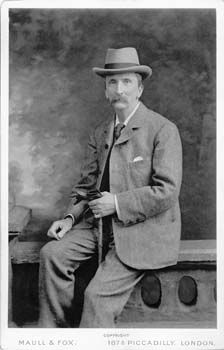David Douglas Cunningham facts for kids

David Douglas Cunningham (born September 29, 1843 – died December 31, 1914) was a Scottish doctor and scientist. He spent much of his life working in India. There, he studied public health and different diseases. He was especially interested in how tiny living things like bacteria and fungi spread through the air. He also did important research on cholera, a serious disease. In his free time, he enjoyed studying local plants and animals.
Contents
Early Life and Medical Journey
Cunningham was born in 1843 in a place called Prestonpans in Scotland. He was the third son in his family. He went to the University of Edinburgh and became a doctor in 1867. His brother, Robert Oliver Cunningham, also became a surgeon and zoologist.
In 1868, David Cunningham joined the Indian Medical Service. This meant he would work as a doctor in India. He was chosen to investigate cholera, a very dangerous illness. He arrived in Calcutta (now Kolkata) in 1869.
Studying Diseases in India
From 1874, Cunningham became a special assistant for health in India. In 1879, he became a Professor of Physiology at the Medical College, Calcutta. He spent a lot of time studying cholera there.
At that time, people had different ideas about how diseases spread. Some thought "bad air" (called "miasma") caused sickness. Others believed tiny particles or germs (called "contagion") entered the body. Cunningham looked into these ideas in India. He wanted to find out how cholera truly spread.
Scientific Discoveries and Research
Cunningham made important discoveries in a field called aerobiology. This is the study of living things that travel through the air.
How Germs Travel Through Air
He used a special tool called an aeroconiscope. This device had a cone that faced the wind. It collected tiny particles from the air onto a sticky slide. Cunningham then looked at these slides under a microscope. He studied the microbes, spores, and pollen floating in the air of Calcutta. He published his findings in 1873.
Investigating Cholera
Cunningham's main work was to understand how cholera spread. In 1883, a German scientist named Robert Koch visited India. Koch was able to find the specific bacteria that causes cholera. It's shaped like a comma and is called Vibrio cholerae. He found it in people who had died from cholera.
This discovery made the British government take cholera research more seriously. Cunningham worked with other scientists to confirm Koch's findings. They looked at water samples from places where people got sick. This research helped prove that bacteria, not just "bad air," caused cholera. Because of these findings, governments started to set up better research labs. Cunningham became the director of one such lab in 1884.
Other Scientific Interests
Cunningham also loved plants. In 1880, he worked at the Calcutta Royal Botanic Garden. He studied different types of fungi, including one found on water lilies. A type of fungus was even named after him: G. cunninghamianum.
He was also interested in how snake venom works. He studied how certain plants, like Ficus trees and Ottelia, reproduce or release gases. He was a member of the council for the Calcutta zoological garden. In 1889, he became a Fellow of the Royal Society, which is a great honor for scientists.
Later Life
Cunningham retired in 1898 because of his health. He was appointed as an Honorary Physician to King George V. He never married. David Douglas Cunningham passed away on December 31, 1914, at his home in Torquay, England.

